The Phaeton Death Mystery
Even in ancient times, astronomers were surprised by the unnaturally huge distance between Mars and Jupiter. Many scientists agreed that there should be another planet in this place. But they could not find it in any way.
On the night of January 1, 1801, Giuseppe Piaci, an Italian astronomer from Palermo, discovered Ceres-the first largest asteroid between Mars and Jupiter. Its diameter was 770 kilometers.
A year later, a second asteroid was discovered in this area — Pallas — the name of the Roman goddess of justice. In 1804, the third minor planet was discovered — Juno, and in 1807-the fourth in a row-Vesta. There was something to think about: where it was supposed to find one large planet, there were four small ones, approaching the ball in shape.
Currently, about two thousand asteroids are known — shapeless solid blocks of various sizes. The diameter of some of them is 0.5 kilometers. Eros was opened in 1898. For a long time, it was considered the only asteroid that goes far inside the orbit of Mars. But Eros also had rivals-Ganymede, Cupid, Apollo, and Hermes. These small planets "walk" even further inside the orbit of Venus and Mercury.
The" movie star " of the sky is considered to be Icarus, which was opened in 1949. This asteroid has the smallest of its kind distance from the Sun and orbits it in 400 days. It moves five times faster than its counterparts. Moving away from our sun, Icarus passes quite close to the Earth every 19 years. This closeness brought him "noisy success".
Maybe all these asteroids are a trace of the death of the fifth large body of the Solar System, which occurred, according to A. Gorbovsky, 11,652 years ago. It turned out that if this entire asteroid belt "folded" into one body, a planet with a diameter of 5900 kilometers would turn out. It would be smaller than Mars and larger than Mercury. At one time, the Soviet astronomer S. Orlov proposed to call this now-defunct planet Phaeton, after the mythical hero.
... The Sun god Helios recklessly swore to his son Phaeton to fulfill any of his requests. The young man wished for one thing-to ride the chariot of the Sun across the sky himself! My father was taken aback: even Zeus can't do this. He began to dissuade the unreasonable boy: the horses are obstinate, the sky is full of horrors — the horns of a Bull, the bow of a Centaur, a Lion, a Scorpion — what kind of monsters you will not meet on the road! But where is there! The arrogant Phaeton could not cope with the four winged horses, and terror seized him. The chariot raced, not understanding the road. From the low Sun, flames engulfed the Earth, cities and entire tribes were dying, forests were burning, rivers were boiling, the seas were drying up. In the thick smoke, Phaeton could not see the way.
Greek mythology says:
The great goddess Gaia-Earth prayed to Zeus: "Look, Atlas barely holds the weight of the sky, the palaces of the gods can collapse, all living things will die, and primeval Chaos will come," Zeus broke a crazy chariot with his lightning. The phaeton with burning curls swept like a shooting star and crashed into the waves of Eridanus. In deep sorrow, Helios did not appear in the sky for a whole day, and only fires lit up the Earth. The gods turned the weeping sisters — Heliades-into poplars. Their tears fall like resin into the cold water of Eridanus and turn into transparent amber…
The ancient Greek myth about the tragedy that took place in heaven thousands of years ago is beautiful and poetic.
Reporting the cause of the catastrophe that befell the Earth, the sacred ancient Indian books indicate that it was caused by the" god Hayagriva " who lived in the abyss. The Holdean myths mention a certain "archangel of the abyss".
What was this something (or someone) that appeared from the abyss of space to make the planet shudder and remain in the memory of mankind for many millennia? In modern terms, we can say that at that time there were nuclear battles of extraterrestrial civilizations-presumably the Sirians, that is, apparently, the inhabitants of the constellations of Lyra and Sirius, with the Lyrians. The latter did not want the salvation of mankind, considering it at this stage of development deprived and incorrigible. The Lyrians wanted the human race to die and they had the opportunity to start their experiments on Earth from the very beginning (this is a separate chapter about the creation of human civilization by aliens).
The planet Phaethon was the main base of the Sirians, who were in constant conflict with the Lyrians because of the redistribution of the planets of the Solar system. The Lyrians believed that for the further development of human civilization, constant stresses are needed — chaos, wars, natural disasters, etc., which they constantly arranged, as a result of which one civilization after another died. The Sirians, on the other hand, followed a peaceful, humane path. Atlantis is the fruit of their creation, but it has also become the main stumbling block between them.
The Lyrians started an experiment -to blow up the Phaeton and put a new cosmic body into Earth's orbit — the Moon (it became such for humanity in the future). The calculation was subtle -strong tidal deformations caused by the approach of a massive cosmic body are able to accomplish in a short time what it takes millions of years under normal conditions.
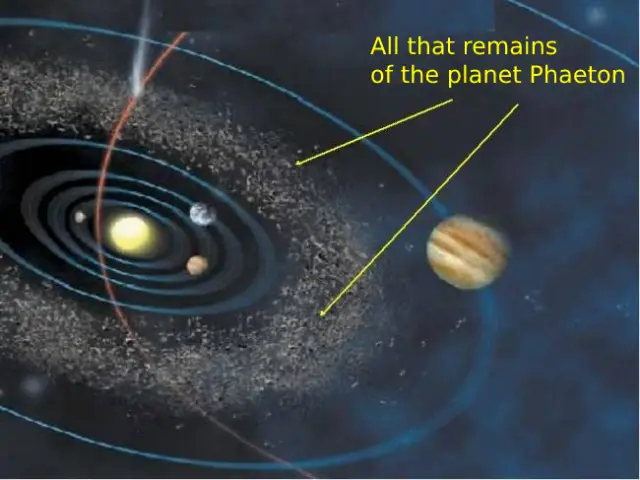
When continents split, land and oceans change places, poles, and tropics, mountains rise, geological processes intensify a thousandfold. The world ocean overwhelms continents, the relief changes, the axes, and speeds of rotation of the planet generate new temperature differences between geographical areas, unprecedented movements of air masses — crushing hurricanes. All this was finely calculated, but all this was preceded by a great struggle…
Wanting to warn humanity about the impending danger, the Sirians sent their representatives around the world. These harbingers of trouble have been preserved in the memory of the people. The chronicles of Burma speak of a man who came from the highest abode. His hair was tousled, and his face was sad. Dressed in black, he walked through the streets wherever people gathered, and in a mournful voice warned people about what was going to happen."
In their legends, peoples often deify sages and heroes. Therefore, it is quite natural that in the Bible, as in other sources, the image of such messengers from the Sirian civilization merges with the image of God himself. God warned Noah about the flood and advised him to make an ark and take people and animals with him.
destroy your house and build a ship instead. Don't worry about your property, be happy if you save your life. But take different living creatures with you to the ship
In the Babylonian epic, the god Ea warns King Xisutros about the impending catastrophe: The son of Ubar Tutu:
Do not make any more wine from agave, but start hammering the trunk of a large cypress tree and enter it when the water reaches the heavens in the month of Tozontli
About the same thing God said in the Aztec code:
Like the Christian god and the god Ea, the Indian god Vishnu advises a person to take living beings and plant seeds with him to the ark.
On the islands of the Pacific Ocean, there are also legends about some aliens warning of a catastrophe. The legends of the Indians of Mexico and Venezuela tell about the flight of people before the terrible night came and the sun went dark.
People did not only build arks. but they also built fortifications on high mountains. The Indians of Arizona and Mexico say that before the disaster, a great man, whom they call Montezuma, came to them on a ship. To save himself from the flood, he erected a high tower, but the god of catastrophe destroyed it.
The tribes of the Sierra Nevada also remember the aliens who built high stone towers. But the flood began, and none of them had time to escape.
Speaking about the widespread spread of reports of the disaster, the English ethnologist J. Fraser notes, for example, that of the 130 Indian tribes of North, Central and South America, there is not a single one whose myths would not reflect this theme.
Saving themselves and their knowledge, people on all continents built pyramid buildings — "places of salvation".
The famous Arab scholar Abu Balkhi (IX-X centuries AD) wrote that the sages," foreseeing the verdict of heaven, " built huge pyramids in Lower Egypt. In these pyramids, they wanted to save their amazing knowledge.
When one of the rulers of Babylon. Xisuthros was warned about the impending catastrophe, he ordered to write "the history of the beginning, flow, and completion of all things" and bury the story in the city of the Sun-Sippar.
After the flood, during which Xisutros himself escaped on the ark he built, he ordered to find the record he left and report its contents to the survivors. All this is told by the Babylonian priest and historian Beroz, who lived in the III century BC.
Titus Flavius Josephus, the greatest historian, and scientist of antiquity wrote that in manuscripts and books (which have not reached us) there is a message that people, having learned in advance about the impending catastrophe, built two columns and wrote down on them the knowledge they possessed.
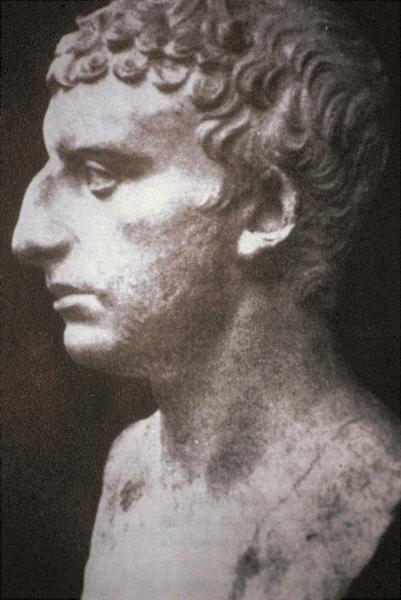
"One column was made of brick, the other of stone so that if the brick column could not stand and it was washed away by the floodwaters, the stone one would remain and tell people everything that was written on it."
Indian mythology says that the god of the abyss Hayagriva then only started the flood to take away from people the sacred books of knowledge of the "Vedas". "Should they also become deities?.. Should they become equal to us?.. " - the Lyrians grumbled in battles with the Sirians because of the Earthlings.
Humanity has personally witnessed these battles of two civilizations that have come down to us in the form of legends and myths — "Mahabharata", "Ramayana", etc.
Based on mythology, it can be assumed that people saw the death of Phaeton and the movement to the orbit of the Earth — Moon. We are talking about an extremely ancient cult of the "winged disk" (the sign of the Sirians). A disk with wings, without allegories identical to the Sun, is carved above the entrances of ancient Egyptian temples. This sacred sign is common among the Assyrians, Babylonians, Hittites, Mayans, Polynesians and was revered by the Atlanteans. Sometimes it is reinterpreted in the image of a bird, but everywhere it symbolizes the beginning that gives life. He is opposed by a hostile principle — the god of death, the destructive forces of darkness in the form of a serpent (the appearance of the Lyrians). The "winged disk" (bird) fights with the snake and wins.
Such images can be found in different civilizations (Egypt, Iran, Sumer)
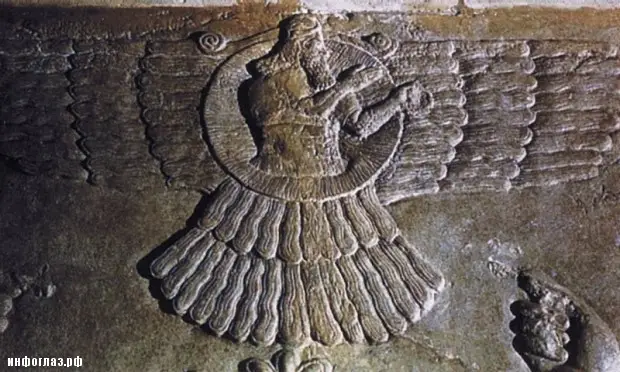
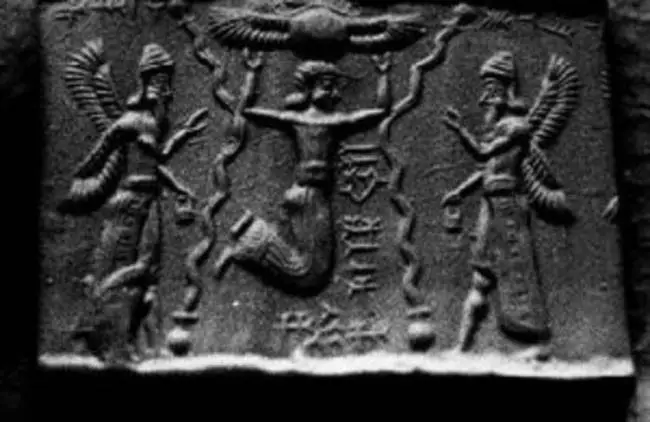
The great vitality and wide prevalence of these symbols indicate that they should be based on some grandiose events that have affected the entire population of the Earth. These images are strangely similar to the complex of celestial phenomena that accompanies the death of the planet Phaeton described above.
The disk with wings is the Sun immersed in a gas — dust nebula, and the "serpent" is the image of comets that first appeared during the formation of the nebula. And the essence of their struggle is obvious.
First, the snake-comets "attacked the Sun, then formed a cosmic cloud, which caused the luminaries to dim, and then gradually began to disperse: the" wings of the disk " grew, the Sun cleared. At the same time, the number of comets decreased: some of them scattered and evaporated in a cloud, some flew away from the Solar system. This victory of the "winged disk" once again returned light and life-giving solar warmth to people. But before that, they had experienced great troubles.
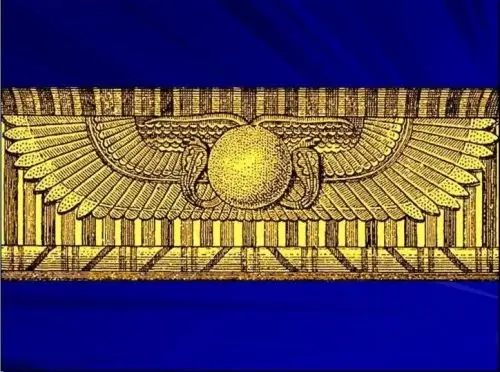
It was cold on our planet. Collisions with large fragments of Phaeton, which were much more numerous then than now, especially near the Earth, led to serious catastrophes. When they fell into the ocean, tsunamis hit the coasts, and trillions of tons of water evaporated from the released heat, which subsequently fell out in the form of heavy rains.
Perhaps, in the same era, the dangerous approach to the wandering Moon caused the worldwide geological catastrophes that we have described above. Although people rightly associated these disasters with unprecedented celestial phenomena, they did not know their true causes. But the horror that shocked the imagination of mankind remained in the memory of the peoples in a specific connection with the heavenly signs. Eclipses of the Sun, which became regular after the "capture" of the Moon, reminded of the first dimming of the luminary (while the solar corona resembled the wings that the ancestors spoke about), and the appearance of comets up to the present day inspired people with despair and expectation of the "end of the world".
It is not by chance, perhaps, that the Maya in their chronicles going back to the antediluvian period do not say anything about the Moon. The night sky was lit not by the Moon, but by Venus!
In South Africa, the bushmen, who keep the memory of the era preceding the catastrophe in myths, also claim that there was no Moon in the sky before the flood.
The same thing that once there was no Moon in the earth's sky was written in the III century BC by Apollonius Rodius, the chief curator of the great library of Alexandria. He used at the same time manuscripts and texts that have not reached us.
Studies by a number of scientists and numerous facts indicate that the above-mentioned asteroids and just meteorites are fragments of the former planet Phaeton, which once orbited around? The sun is between the orbits of Mars and Jupiter.
The structure of the lost Phaeton was theoretically reconstructed by academician A. Zavaritsky, who considered iron meteorites to be fragments of the planetary core, stone meteorites to be remnants of the crust, and iron—stone meteorites to be fragments of the mantle. According to the mass of Phaeton, as we have already said, it was somewhere between Mars and Mercury and therefore could have both a hydrosphere and a biosphere. Then they get an explanation for the fall of meteorites from sedimentary rocks, and numerous finds of traces of life in meteorites over the past 30-40 years in different parts of the globe.
However, the mystery of the mysterious formations called tektites has not yet been solved. In terms of composition, structure, dehydration, and all other parameters, they are surprisingly similar to glassy slags formed during ground-based nuclear explosions! As Felix Siegel pointed out. one of the researchers of this problem, if tektites are really glass meteorites, we will have to admit that their formation from some large cosmic bodies was accompanied by nuclear explosions.
We do not know the true causes of the Phaeton disaster. It is possible that the planet disintegrated during powerful volcanic activity. However, it appears that the disintegration began from the planet's surface, likely due to extremely powerful explosions that transformed the sedimentary rocks into vitreous slags.
This means that the Phaeton was inhabited and whether it can be considered thermonuclear. the explosions that gave rise to tektites, the final "chords" of the war between its inhabitants?
Of course, the hypothesis about the" thermonuclear " death of Phaeton deserves a serious scientific justification. One of the difficulties on this path is the huge spread of asteroids in outer space and the weak technical capabilities of our civilization in their research at the present stage.
Asteroids and meteorites may prove to be the key to solving many mysteries of the cosmos, perhaps even those related to the fate of space civilizations.
It seems absurd to assume that humans could observe the death of the planet Phaeton… However, it is difficult to dismiss all these hypotheses as groundless fiction, especially since modern astronomers do not exclude such a possibility. Of course, myths are not proof. The evidence has yet to be found, but the search is preceded by guesses…
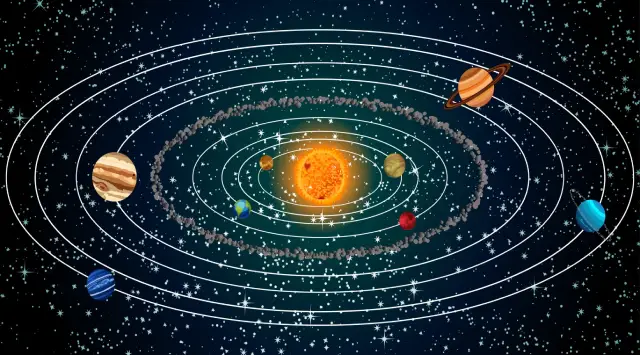
Another version
By the middle of the XX century, almost no one believed in the existence of a Phaeton. The Titius-Bode formula was found to be incorrect, and natural causes were found to explain the origin of the asteroid belt.
However, I. Rezanov is sure that there was such a planet after all. It was formed together with other planets of the Solar system about 4.6 billion years ago. But where is she then?
Researchers of the past even assumed that a thermonuclear catastrophe once broke out on Phaeton. However, Rezanov considers such an explanation as mythical as the ride of a Phaeton on a chariot, and the reasons for the destruction of the planet are purely natural.
The information collected by astronomers testifies to a grandiose cosmic cataclysm that befell the solar system in the distant past. Otherwise, how can we explain the giant craters on the Moon, Mars, Mercury and on our Earth? In addition, the result of the disaster was the rotation in the opposite direction with respect to the planets and other satellites of some moons of Jupiter, Saturn, Uranus.
The study of the Moon showed that the planet Olberso (Phaeton) began to collapse about 4 mldr years ago, that is, 500-600 million years after the formation of the Solar System, Rezanov believes. This is exactly the age, in his opinion, of most ray craters. They were formed as a result of the fall of the fragments of the Phaeton on the Moon.
Why did the Phaeton collapse after all? The reason for this could be a space disaster. Once a huge asteroid got into our Solar system. By the will of fate, or rather following the laws of celestial mechanics, he collided with the Phaeton with such force that only fragments flew from it.
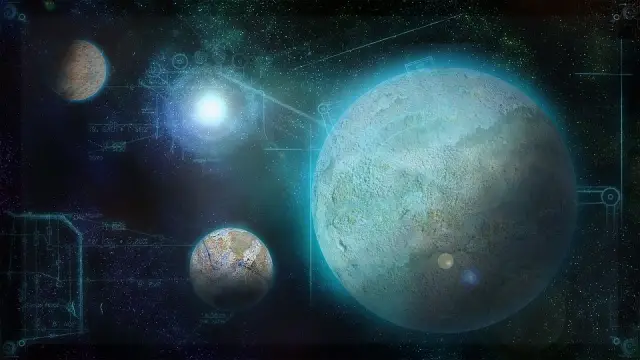
Rezanov also believes that the destruction of the Phaeton could have happened without the participation of an unknown alien. According to his calculations, the planet initially had a mass less than the earth and equal to the mass of Mars. It had a powerful bark and a very small iron core. In other words, the ratio of the crust, mantle, and core was like that of Mars, but, unlike it, Phaethon was surrounded by a giant hydrogen atmosphere.
This gas was released from a powerful silicate Mantle, oversaturated with hydrogen. It was in it that the physical conditions for a gas explosion were created. Since the mass of Phaeton is not so great, hydrogen began to quickly evaporate from its initially high-density atmosphere; the pressure of the atmosphere decreased. The mantle was bursting from the inside with molten rocks and new portions of gas. In places, it began to melt. The zone of partial melting of the mantle was filled with hydrogen and carbon oxides, water and carbon were formed from these gases. During this reaction, a huge amount of heat was released. The water turned into steam, which dramatically increased the pressure in the system. As a result, pieces of the crust began to fall off from the surface of the planet, and within a billion years the crust completely fell off.
The fragments of Phaethon's crust scattered throughout the galaxy formed craters of all sizes on other planets and their moons: from small to giant. Some of the debris turned into irregular moons of Jupiter, Saturn and other planets. The Phaeton itself lost up to 30% of its mass.
But his problems did not end there. The fallen crust exposed the mantle,a decrease in pressure provoked its further melting. Later, a secondary cooling Crust began to form on the surface of the exposed and molten mantle, in which complex hydrocarbon compounds were formed, water basins appeared, and perhaps even the simplest forms of life appeared.
The secondary crust existed for 300-400 million years. But gradually, she began to burst from the inside. And for the second time, pieces flew from it, turning into meteorites outside the atmosphere, which scattered throughout the Solar System. Some of them, according to Rezanov, got to Earth, and scientists still find traces of extraterrestrial life on them.
And the planet itself eventually collapsed completely, creating an asteroid belt.
Not everyone agrees with this point of view. Why did Phaeton have such a fate? Why, for example, does Venus, which is still so hot, despite its relatively small size, still have a very dense atmosphere, and pieces of crust do not fly around the entire Solar System?
However, do not think that the story of Phaeton ended there. Asteroids every year present more and more new puzzles. Relatively recently, for example, it turned out that the asteroid Bamberg is blacker than the blackest soot — it reflects no more than 3% of the sun's rays falling on it. But Vesta is superior to Mars in its ability to reflect: 28% of the reflected rays give it the opportunity to show off a bright star in the sky.
And that's not all. Using spectrometry, it was possible to determine that Vesta consists of a rather rare material on Earth — basalt achondrites. But achondrites are formed only at very high pressure and high temperature-such as can only be deep in the bowels of terrestrial planets. So the legend of the Phaeton has a foundation.
The asteroid Hector also struck everyone. Its shine changes within 7 hours. This means that it is irregular in shape and rotates around its axis. And, judging by the shine, it should be ... metallic!
The presence of a metallic luster can be explained differently. Here is an interesting hypothesis proposed by the Doctor of physical and Mathematical Sciences A. Bagrov:
- Now we have accumulated astronomical information that allows us to revise the theory of the creation of our planetary system. Half a century ago, Academician O. Schmidt put forward the hypothesis of the formation of our system from a protoplanetary cloud. Now it has become generally accepted. According to this hypothesis, the Sun first appeared, and then, under the influence of solar radiation and gravity, the evolution of the remnants of the protoplanetary cloud occurred, which led to the appearance of planets.
Many are inclined to believe that the planets were born at first. They are relatively small in size, and therefore their formation occurred faster than the luminary itself.
Since the Sun was not completely formed at the first stage, its gravitational field was unstable, and therefore the orbits of the planets around it were finally undefined. As a result, from time to time there were clashes between them. One of them happened between a Phaeton and a certain space alien who accidentally got into our planetary system. Upon impact, there was a huge explosion, and the red-hot Phaeton fell apart into pieces. Its fragments scattered, bombarding the surrounding planets. This is now evidenced by the huge impact craters visible on the surface of many celestial bodies to this day.
However, most of the debris remained in the same orbit, forming an asteroid belt between Mars and Jupiter. Only, some more or less small particles were ejected to the periphery of the Solar system. Moving through the remnants of a dust cloud, they took on their surface the snow that remained in it, significantly adding to the mass and becoming the nuclei of future comets.
These comets still move in their orbits in the region of Jupiter, Neptune and even further from the Sun. And it would be interesting to conduct a deep exploration and make sure whether their cores are really fragments of a former planet. Interesting discoveries are waiting for us. After all, if the hypothesis is correct, then comet nuclei should consist of an iron-nickel alloy, like the core of Phaeton. And this asteroid substance may turn out to be a gift of fate for all mankind: it will not be necessary to deliver parts and components for them from Earth during the construction of spaceships of the future — we will be able to launch production directly in space, using metal from these asteroids as raw materials.
You might agree, a very tempting prospect!
About author:
Serg Toporkov Ufologist, Ph.D., blogger, I go on my own expeditions for UFOs. I use scientific methods to investigate the UAP phenomenon. Write to me |
Related tags:
Phaeton mystery planet Jupiter Mars death aliens Moon Venus ancient solar systemRandom UFO or conspiracy article
The artificial barrier in space surrounds the entire Earth: it was discovered by NASA probes
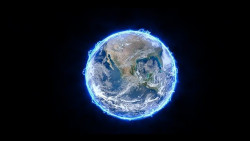 Three years ago, NASA space probes discovered strange phenomena in space. They resemble an artificial barrier that completely surrounds our planet. The beginning of studies of this fantastic barrier has shown that it somehow affects the space weather outside the atmosphere of our planet.
Three years ago, NASA space probes discovered strange phenomena in space. They resemble an artificial barrier that completely surrounds our planet. The beginning of studies of this fantastic barrier has shown that it somehow affects the space weather outside the atmosphere of our planet.
